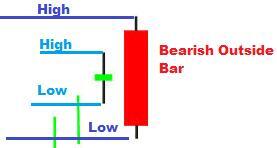
A Basic Introduction to OpenCV in Deep Learning
Contents:


Later, its active development continued under the support of Willow Garage with Gary Bradsky and Vadim Pisarevsky leading the project. OpenCV now supports a multitude of algorithms related to Computer Vision and Machine Learning and is expanding day by day. The NI Vision OpenCV Utilities is installed using VI Package Manager . Your host machine must use VIPM 2014 or above in order to install the package. Do you have questions or suggestions for OpenCV Weekly Webinar?
- In the getRotationMatrix2D function, 180 specifies the degree by which the image should be rotated, 1 is the scaling factor, the function call would return the rotation matrix in the matrix variable.
- The above line of code will do as specified in the syntax- i.e., it will destroy all windows that have been created during our OpenCV session.
- If you want to start your journey in the field of computer vision, then a thorough understanding of the concepts of OpenCV is of paramount importance.
- Vision Development Module 2015 SP1 is required for LabVIEW examples.
- As part of the Google Summer of Code 2013 program under the guidance of Alexander Mordvintsev.
Termination is prompted when the user presses any character or directional key on the keyboard. The purpose of computer vision is to understand the content of the images. It extracts the description from the pictures, which may be an object, a text description, and a three-dimension model. For example, cars can be facilitated with computer vision, that can identify different objects around the road, such as traffic lights, pedestrians, traffic signs, and so on, and acts accordingly. # python# machine learning# computer vision# pytorchIf you drive – there’s a chance you enjoy cruising down the road.
OpenCV-Python Tutorials
In this tutorial, we are going to learn how to use OpenCV library in Python. You must use either Vision Acquisition Software or Vision Development Module if you are developing vision applications that use NI Vision algorithms such as Pattern Matching and Advanced Edge Detector. Vision Development Module 2015 SP1 is required for LabVIEW examples. In the final week of this course, you will build a computer vision app that you will deploy on the cloud through Code Engine. For the project, you will create a custom classifier, train it and test it on your own images. We will now how to process an image with the OpenCV package in Python Programming Language.
Optimal selective floor cleaning using deep learning algorithms and … – Nature.com
Optimal selective floor cleaning using deep learning algorithms and ….
Posted: Sat, 24 Sep 2022 07:00:00 GMT [source]
The problem with this approach is that the aspect ratio of the image is not maintained. So we need to do some extra work in order to maintain a proper aspect ratio. Now we will focus on extracting the RGB values of an individual pixel. This is the original image that we will manipulate throughout the course of this article.
See The OpenCV Model Zoo, Segment Anything with CVAT, and Introducing KopiKat
The first example will be the addition of two images, and the second example will be blending two images. Saving an image is a very commonly used feature, as we may need to update our image and save the changes to the file system for later use. As new modules are added to OpenCV-Python, this tutorial will have to be expanded. If you are familiar with a particular algorithm and can write up a tutorial including basic theory of the algorithm and code showing example usage, please do so. Python is a general purpose programming language started by Guido van Rossum that became very popular very quickly, mainly because of its simplicity and code readability.

If the https://forexhero.info/ is already in your current working directory, you only need to specify the picture name and extension type. Set the second parameter to 0 to read it as a grayscale image, -1 to read it as unmodified , and 1 to read it as a colour image if you want to read it as a colour image. If we talk about the basic definition of image processing then “Image processing is the analysis and manipulation of a digitized image, especially in order to improve its quality”. Displaying an image using OpenCV is a two-step process; first, we have to load it, and then we can display it. Both operations are done in sequence using different functions.
This also makes it easier to integrate with other libraries that use Numpy such as SciPy and Matplotlib. OpenCV was started at Intel in 1999 by Gary Bradsky, and the first release came out in 2000. Vadim Pisarevsky joined Gary Bradsky to manage Intel’s Russian software OpenCV team. In 2005, OpenCV was used on Stanley, the vehicle that won the 2005 DARPA Grand Challenge.
Computer-Vision is playing a major role in self-driving cars, robotics as well as in photo correction apps. To conclude it all, let’s reiterate over some important points that we discussed in this article. OpenCV is a library available in multiple languages and is mostly used in conjunction with NumPy, SciPy and Matplotlib, as we saw in some of the examples above, as well. Some of its functions are the same as in Matlab, and it also supports vectorized operations, hence increasing computational efficiency. If you have used Matlab, you may be familiar with these image operations. In this tutorial, we’ll cover OpenCV installation on Mac, Windows, and Linux, image operations, image arithmetics, image smoothing, and geometric transformations using OpenCV.
Mouse and Trackbar in OpenCV GUI
When it integrated with various libraries, such as NumPy, python is capable of processing the OpenCV array structure for analysis. To Identify image pattern and its various features we use vector space and perform mathematical operations on these features. OpenCV is an open source computer vision and machine learning software library. It was built for various purpose such as machine learning, computer vision, algorithm, mathematical operations, video capturing, image processing etc. So in this article, we covered the basic Introduction about OpenCV Library and its application in real-time scenarios.
In C++, OpenCV employs its Mat matrix structure to represents image data, but the Python interface represents images as a NumPy N-dimensional array . So ideally, but not mandatorily, some NumPy familiarity is required to understand this collection. In my other article you will find a NumPy notebook that introduce the required knowledge. In this module, we will discuss the rapidly developing field of image processing. In addition to being the first step in Computer Vision, it has broad applications ranging anywhere from making your smartphone’s image look crystal clear to helping doctors cure diseases.

The image can be displayed in a pop-up window using the cv2.imshow() method. However, if you try to close it, you can get stuck with its window. Arithmetic operations on images refer to adding, subtracting, multiplying, or dividing multiple images to generate a new image which is an arithmetic combination of the input images. Image arithmetics has a lot of applications, like adding a watermark to an image, creating a blended combination of two images, applying different types of image filters, etc. The first parameter to the imshow() function is the string name that you want to display on the image window.
Reading and Writing Videos using OpenCV
For this learning experience, we will use the OpenCV Logo.png. You may navigate to, and download the image at this link, or you may save the image found below. As one may know, most Machine Learning Algorithms require inputs to be quantitative in nature, i.e., numerical. By changing the absolute path of the image here, you can test reading it from your local computer or even the internet!
Direct visualization of cooperative adsorption of a string-like … – Science
Direct visualization of cooperative adsorption of a string-like ….
Posted: Wed, 12 Oct 2022 07:00:00 GMT [source]
Thank you so much for taking your precious time to read this blog. Feel free to point out any mistake(I’m a learner after all) and provide respective feedback or leave a comment. With cameras, data, and algorithms, computer vision trains machines to accomplish these jobs in much less time.
Image Operations Using OpenCV and Python
OpenCV — which stands for Open source Computer Vision — is a popular, open-source, computer library originally developed by Intel in 1999, being actively used by the industry and academy. The library is cross-platform and free for use under the BSD license. As part of the Google Summer of Code 2013 program under the guidance of Alexander Mordvintsev. Prior knowledge of Python and Numpy is recommended as they won’t be covered in this guide. Proficiency with Numpy is a must in order to write optimized code using OpenCV-Python.
- For any color image, there are 3 primary channels -red, green and blue.
- In this tutorial, we are going to learn how to use OpenCV library in Python.
- It extracts the description from the pictures, which may be an object, a text description, and a three-dimension model.
- Proficiency with Numpy is a must in order to write optimized code using OpenCV-Python.
The second opencv introduction is the image handler we created using the cv2.imread() function. Developed in efficient C/C++ code, OpenCV also presents a stable Python interface since 2009. The functions prototypes in the Python API can differ from the C++ version, but the OpenCV official documentation presents both versions for reference.
Basically, if we want one image to be more focused, and the other one to be more faint when they get merged, we will go with blending, instead of simple addition. Now that we have installed OpenCV on our workstations, let’s get our hands dirty with some of the functionalities that OpenCV offers. The following video is an example of Canny Edge Detection using OpenCV cv2.Canny() function at the left, side by side with a Deep Neural Network Inference done with OpenCV and OpenVINO, at the right. The reason the early developers at OpenCV chose BGR color format is that back then BGR color format was popular among camera manufacturers and software providers, which is not true nowadays. The notebooks are divided by the topics, each containing a lesson with estimated time needed for completion.
We love suggestions from the community, and will read selected questions on the air. We have some more exciting news to share today– OpenCV.AI have launched a next-level dataset augmentation service for computer vision, available to try for free atkopikat.co. Multiply your data by 10x in just minutes while preserving labeling and privacy, and enjoy easy scalability.

The library contains more than 2500 optimized algorithms, which has excellent accuracy in performance and speed. • The concept of OpenCV in Deep Learning is applied for recognition of faces. Divide an image into 8-bit (0-7) planes, with the last few planes containing the majority of the image’s data. An image may be defined as a two-dimensional function f, where x and y are spatial coordinates, and the amplitude of fat any pair of coordinates is called the intensity or grey level of the image at that point.
We also covered other key terminologies and fields where OpenCV in deep learning is being deployed as well as implemented python code for performing some of the basic image operations with the help of the OpenCV library. Apart from that OpenCV in deep learning would also find application in a variety of industries. OpenCV Model Zoo is a repository that houses a collection of pre-trained computer vision models, providing a valuable resource for developers and researchers. To load an image into our system RAM , we are required to make use of the imread() method provided by OpenCV. We are aware that images are a source of data- images are sources of data, from which we can acquire information and infer patterns.
Meet Hailo-8™: An AI Processor That Uses Computer Vision For Multi-Camera Multi-Person Re-Identification – MarkTechPost
Meet Hailo-8™: An AI Processor That Uses Computer Vision For Multi-Camera Multi-Person Re-Identification.
Posted: Mon, 05 Dec 2022 08:00:00 GMT [source]
First one is IMREAD_GRAYSCALE, which as the name suggests, converts the image to grayscale before reading it. The second one is IMREAD_UNCHANGED, which loads the image without cutting out the alpha channel. The default is IMREAD_COLOR, which simply reads the colored image using the RGB channels only.
In this article, I will try to introduce the most basic and important concepts of OpenCV in an intuitive manner. If you want to start your journey in the field of computer vision, then a thorough understanding of the concepts of OpenCV is of paramount importance.
